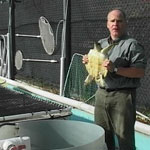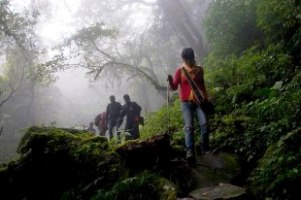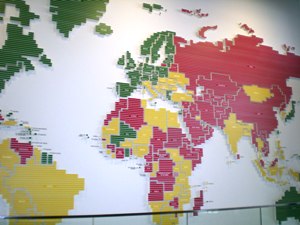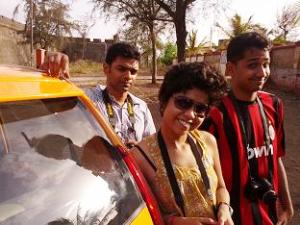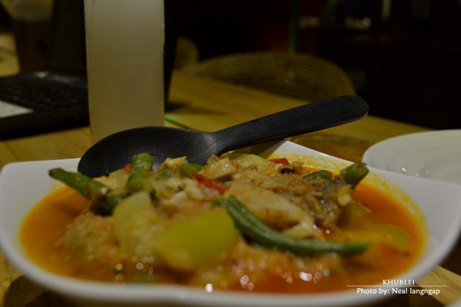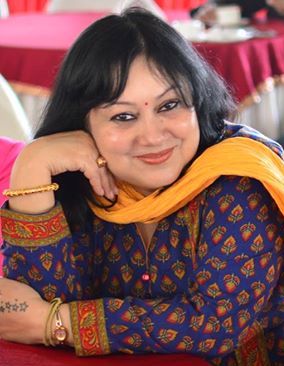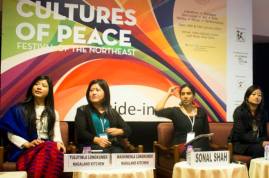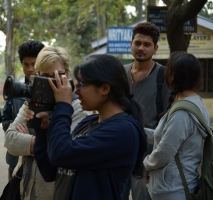A region that has spectacular natural beauty and some of the bittermost conflicts and insurgency.
A contiguous piece of land that packs eight whole states of a country, and then gets all of 20 MPs to represent it in Parliament.
A group of states that apparently has a 100 millionnaires, but has the least economic investment anywhere in post-liberalised India.
Would you call it Irony or Paradox – this game that Destiny plays on India’s ‘Northeast’?
And what part has the media played in how ‘mainstream’ Indians perceive their own fellow countrywomen and men from this region?
The latter was in fact the question that triggered the ‘The Thumb Print Conversations’ - a series that its Editor-Founder Teresa Rehman chose to launch from the south Indian city of Bangalore.
From journalists Ammu Joseph and Gita Aravamudan, renowned author and social scientist Ramchandra Guha to Walter Fernandes, head of the North Eastern Social Research Centre and head of the Assam society of Bangalore, Dr Simanta Sharma; each of the panelists invited to discuss the topic “Media and Northeast: Moving Ahead’ brought forth a different dimension, the details of which can be read in the article by Pushpa Achanta in this same issue.
Moderating this session at the Indian Social Institute, I could not help but think of my own limited – but unforgettable – experience of Northeast India four years back. Half a century of neglect, bungled policies and deliberate politicking by the governments at the Centre and the State have left the economy of the region crippled, its abundant natural beauty exploited and most of its people at the mercy of parallel militant powers that virtually run the show.
In March 2009, along with women journalists from across the country, I landed in Imphal as part of the Network of Women in Media (NWMI). The NWMI, that has a tradition of its members pooling their own money and resources to meet every year at different locations, had that year zeroed in on the Manipuri capital. Until then, used to only meeting at big cities like Delhi, Mumbai, Kolkata, Hyderabad & Bangalore, this was a refreshing change. Plus a chance for ‘metro journalists’ to see what life in the Northeast is actually like. All thanks to the generous and compelling invitation of the Manipur mediawomen’s group and its charming representative Anjulika Thingnam Samom.
After getting past the exciting logistics – different groups coming from their own cities & towns all the way to Kolkata, meeting at a common point and then taking a flight – we landed at the austere Imphal airport. The smiling faces of our hosts couldn’t have prepared us for the reality of the North-East, especially the 12-hour curfew that we would see in place by that very evening. The Manipuri women who had come to accompany us from the airport to our arranged accommodation, made light of it, helpless as they were against the curfew which had already been in force for the past 20 days.
I bet even those of us in the business of newsreporting from riots and conflict situations, can not imagine what it means to actually live day after day in a way that at the strike of 5 in the evening, one’s independence & freedom as a citizen is cut off. Completely. To imagine that by 5.01 pm, you would not be able to Step Out on the street. Forget going to watch a movie, hang around with friends, eat out or shop at a mall – those don’t even count as inconveniences - under curfew, there is no way you can go for a quick dash to your corner shop to pick up milk that you had forgotten or even take your little one to the nearby clinic when you sensed she was running a temperature. That until the next morning. And that, for almost a month.
Total curfew by the Army for those 12 hours every day. At the same time, NH 39, the crucial lifeline that links Guwahati to Manipur and most of the outer world, had been blocked by clashing ethnic groups. Trapped between the Army and the insurgents, the innocents paid the price, literally. Almost 200 rupees for a litre of petrol. Milk, vegetables and essential commodities hard to get and harder to preserve, what with long and erratic power cuts making fridges and gadgets just dummies for the showcase.
And yet, no one beyond Manipur or the Northeast had a clue this was happening. Not even a contingent of countrywide journalists that had descended on the valley. Working at that time for a national television news channel myself, I was deeply disturbed. I could not help but think that if this were to happen for a day in say Mumbai or a Chennai, wouldn’t television channels have done 24x7 OBs ‘Live from the National Highway’ with ‘N-E experts’ back in the studio? Wouldn’t Breaking News scrolling in big print across TV screens have magnified every little move, headlined it every bulletin and TV reporters got hold of appropriately-poor families that had gone without milk & their meal because of the blockade?
The Northeast, we women realised, was totally another planet. Its people taken for granted, just because their innate sense of dignity stopped them from making a noise like the rest of India would have, under such stark apathy. But for me, the extent to which the Northeast was isolated from our collective sub-conscious as a country, dawned when I saw and met the woman who last drank a drop of water on her own, way back on November 1, 2000: Irom Sharmila Chanu.
For those who came in late, Irom has been on a non-stop fast since that day 13 years back when 10 civilians were gunned down by the Assam Rifles at Malom on the outskirts of Manipur. Her one-point demand to the government: Withdrawal of AFSPA (Armed Forces Special Powers Act), an Act that she and lakhs of Manipuris believe grants the Army impunity and unquestioned authority to act against the people of the land. Her face, now inseparable from the nasal tube used to forcefeed her, has become the symbol of peaceful protest against a never-seeming-to-end conflict.
By a divine fluke of circumstances, the day we were in Manipur’s capital coincided with the day of her annual release from detention. All of us journalists flocked to the government hospital in Imphal to catch a glimpse of Irom, for whose release the Meira Peibis (a group of elderly Manipuri women known for the causes they have taken up) had quietly kept up a brave 88-day relay hunger strike. The women waited outside patiently for their hero. And when she walked out, Irom Sharmila, who happens to be a poet and writer, spoke evocatively of coming back to the "arms of the mothers of Manipur", drawing silent tears from all those around her.
As we watched, Irom walked — not home as her mother has resolved to not see Sharmila’s face until her demand was met — but straight to the pandal a few yards away to join the women who had been on the incessant fast.
Desperately wanting to capture on camera the extraordinary grit of this Manipuri and her fellow women, I had earlier in the day made calls to people back at my TV channel in New Delhi asking to cover Irom’s release for the night news bulletin. The team needed some convincing, not able to see “what’s in the story”. Thankfully, the reporter’s decision prevailed, and I was happy to get an ‘exclusive’ with the iconic activist later that evening.
After Irom spoke on the (hastily-hired) camera (with a hired freelance cameraman) movingly of the struggle for justice for her people, my own struggle started. To uplink the newsfeed to the production control room of my TV channel. Footage that takes under-5 minutes usually through satellite-link, had no way of being transmitted from where my special interviewee and I were in Imphal.
How would the newsclip go? There wasn’t a single outdoor broadcast (OB) van of any channel national or local, anywhere in that capital city. Sending the tape by flight would have meant only the next afternoon on the single airlines that operated between Imphal & Delhi (via Kolkata, I can’t recall now). The highway blockade ruled out even the long road option to Guwahati where OB vans would have sent it off to Delhi in a jiffy.
With the curfew in place, one had to get back to the room, a place which had no infrastructure to help a desperate journalist. One had to wait for morning to dawn, so the cameraperson and I resumed our search and finally managed to find a browsing centre near the Imphal market that had FTP (File Transfer Protocol) to send, amidst system shutdown twice due to power cut, the crucial feed on slow-motion to the Delhi studio ...
Can I be that ‘expert’ on the ‘Why does the media not cover the Northeast enough’ TV debate tonight?
Find us on facebook: facebook.com/TheThumbPrintMag







